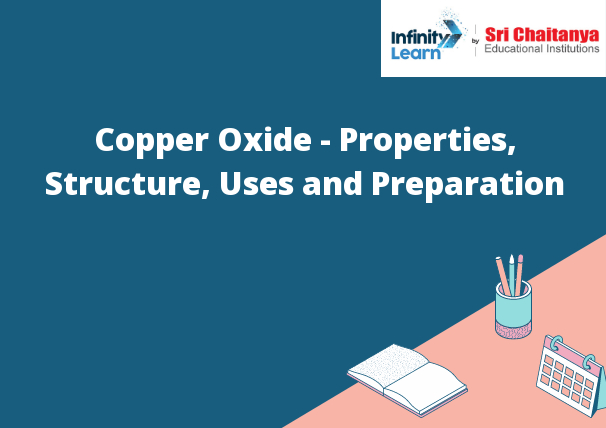Table of Contents
Introduction of Copper oxide :
Copper oxide is an inorganic compound with the formula CuO. A black solid, it is the most common copper oxide and is produced as a by-product of copper refining.
Physical Properties of Copper Oxide
CuO is a black solid that is insoluble in water. It has a relatively low melting point of 2,564 °C and a boiling point of 3,601 °C.
CuO is a good conductor of electricity and is used in electrical wiring. It is also used as a pigment in paints and other products.

Basic Principles about Electrical Conductivity
The basic principle behind electrical conductivity is that materials that allow electrons to flow freely are called good conductors, while those that do not are called insulators. In metals, the outermost electrons are not bound to any one atom and can move freely throughout the material. This allows electricity to flow easily through the metal. In contrast, insulators have tightly bound electrons that do not move freely, making them poor conductors of electricity.
Placing a Metal Object Next to and Parallel to a Wire
If you place a metal object next to and parallel to a wire, the metal object will create a short circuit. This is because the metal object will complete the circuit between the two wires, allowing electricity to flow through it.
Placing a Metal Object Next to and Perpendicular to a Wire
This demonstration is used to show that an electric current is created by a moving charge. When the metal object is placed next to and perpendicular to the wire, it creates a closed circuit. This is because the metal object forms a bridge between the two ends of the wire, allowing the electric current to flow through it.
What is Copper(I) Oxide?
Copper(I) oxide is an inorganic compound with the formula CuO. It is a black solid that is insoluble in water. It is the most common copper oxide and is produced by the oxidation of copper metal.
Copper Oxide Colour
Copper Oxide is a natural occurring mineral found in earth’s crust. It is made up of copper and oxygen atoms bonded together.
Copper oxide is a brownish-yellow powder that is insoluble in water. It is used as a natural food colourant and has a bitter taste.
Copper oxide is a permitted food additive in the EU and USA. It is used to add a brown colour to food products.
Copper oxide is a safe food additive and has no known adverse effects.
Other Specifications of Cu2O (Copper(I) Oxide)
• Appearance: white powder
• Chemical formula: Cu2O
• Molar mass: 79.55 g/mol
• Melting point: 908 °C
• Boiling point: 2,083 °C
Physical Properties of Copper(I) Oxide – Cu2O
Chemical formula
Cu2O
Molar mass
134.08 g/mol
Appearance
Cu2O is a red powder.
Density
4.0 g/cm3
Boiling point
2,527 °C
Solid state
Cu2O is a solid at room temperature.
Chemical Properties of Copper(I) Oxide – Cu2O
Cu2O is a white, powdery solid that is insoluble in water. It is a strong oxidizing agent and will react with most metals to form cupric salts.
Uses of Copper Oxide Cu2O
Copper oxide is used as a pigment in paints and other products. It is also used as a catalyst in some chemical processes.
Difference between Cupric and Cuprous Oxide
Cupric oxide is an inorganic compound with the chemical formula CuO. It is a black solid with a metallic luster. Cuprous oxide is an inorganic compound with the chemical formula Cu2O. It is a red solid with a metallic luster.
How Copper Oxide is Harmless to Human Beings?
Copper oxide is an inorganic compound with the formula CuO. It is a black solid that is insoluble in water. Copper oxide is harmless to human beings because it is not soluble in water and it is a black solid.
Preparation of Cuprous Oxide
Nanoparticles
In a typical procedure, about 1 g of cuprous oxide was dispersed in 10 ml of water. The dispersion was sonicated for about 10 minutes and then filtered through a 0.45 μm membrane filter. The nanoparticles were collected by centrifugation and washed with water. The nanoparticles were redispersed in ethanol and then dried under vacuum. The yield was about 85%.
Characterization of Cuprous Oxide Nanoparticles
The size and morphology of the cuprous oxide nanoparticles were characterized by transmission electron microscopy (TEM). The TEM images showed that the nanoparticles were spherical with an average diameter of about 10 nm.









